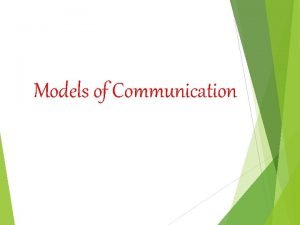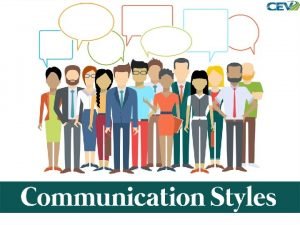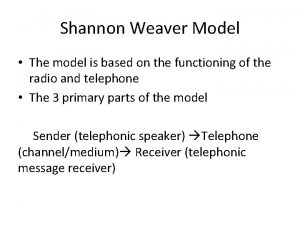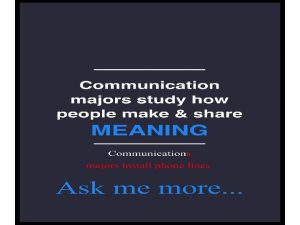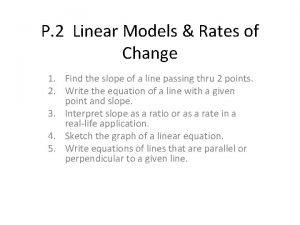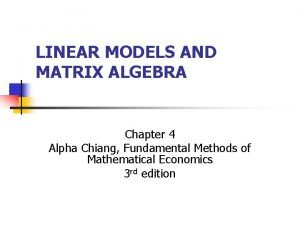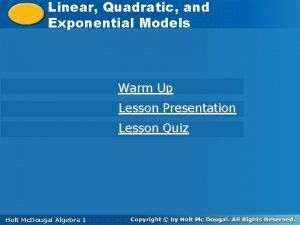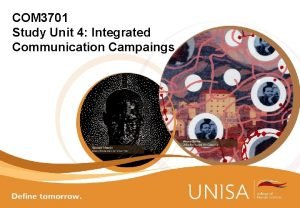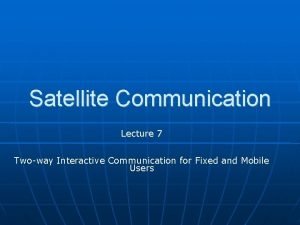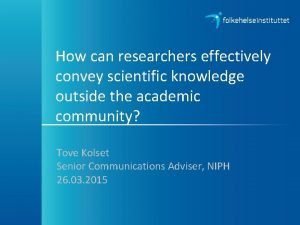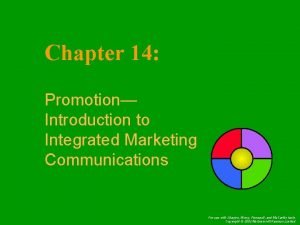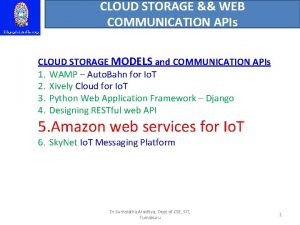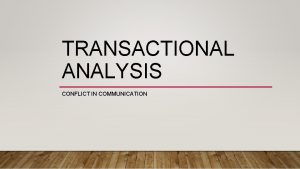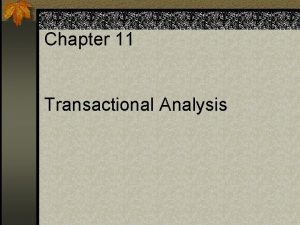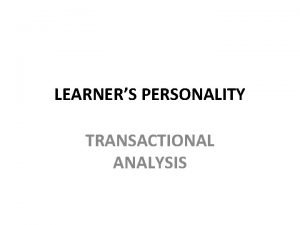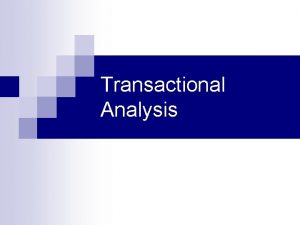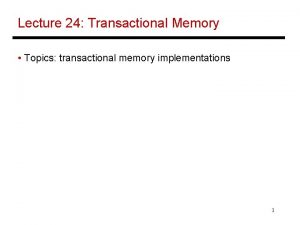The Models of Communication Linear Interactive and Transactional















- Slides: 15

The Models of Communication Linear, Interactive and Transactional.

A Linear View

Linear Model In this linear communication model, communication is like giving an injection: a sender encodes ideas and feelings into some sort of message and then conveys them by means of a channel (speech, writing, and so on) into a receiver, who decodes the message.

Linear Model cont. The model highlights how different channels can affect the way a receiver responds to a message. It also introduces the concept of noise- a term used by social scientist to describe any forces that interfere with effective communication. Noise can occur at any stage of the communication process.

Linear Model cont. Three types of noise can disrupt communication - external, physiological and psychological. External noise also called physical, includes those factors outside the receiver that make it difficult to hear, as well as other kinds of distractions. Eg. , a smoky room. Physiological noise involves biological factors in the receiver or sender that interfere with accurate reception: illness, fatigue and so on.

Linear Model cont. Psychological Noise refers to forces within a communicator that interfere with the ability to express or understand a message accurately. For eg, stress, defensiveness.

Disadvantages of the Linear View It makes the assumption that all communication involves encoding. For eg. There are nonverbal cues that occur whether we speak or not. Some of these cues are unconsciously done. It also suggest that communication flows in one direction, from sender to receiver. It ignores the fact that receivers react to messages by sending other messages of their own.

An Interactive View

Interactive Model This model makes the importance of feedback clear. It shows that most communication is , indeed, a two way affair in which we both send and receive messages. It also identifies a clue to the cause of many misunderstandings. Such misunderstandings often arise because communicators often occupy different environments- fields of experience- that help them understand others behaviour.

In communication terminology, environment refers not only to a physical location but also to the personal experiences and cultural background that participants bring to a conversation. Consider just some of the factors that might contribute to different environments: A might belong to one ethnic group and B to another A might be rich and B poor

Interactive Model cont. In the figure showed in the previous slide, the environments A and B overlap, representing the background communicators must have in common. As the shared environment becomes smaller, communication becomes more difficult. Differing environments make understanding difficult, but certainly not impossible. Hard work and many communication skills help to bridge the gap that separates us.

A Transactional View

A transactional View The activity of communicating is best represented by a transactional communication model. A transactional model reveals that we usually send and receive messages simultaneously, so that the images of sender and receiver should not be separated as if a person were doing only one or the other, but rather superimposed and redefined as ‘communicators. ’

Transactional View cont. The model also posits that communication isn’t something we do to others, rather, it is an activity we do with them. The transactional nature of communication is explained in the relationship between parents and children.

In concluding… Communication is a continuous, transactional process involving participants who occupy different but overlapping environments and create a relationship by simultaneously sending and receiving messages, many of which are distorted by external, physiological and psychological noise.
 What is a linear model of communication
What is a linear model of communication Models of communication examples
Models of communication examples Modal and semi modal verbs
Modal and semi modal verbs Communication process example conversation
Communication process example conversation Shannon and weaver model
Shannon and weaver model Axioms of communication
Axioms of communication Linear models and rates of change
Linear models and rates of change 2x1 matrix
2x1 matrix Chapter 7 linear programming solutions
Chapter 7 linear programming solutions Linear vs quadratic vs exponential
Linear vs quadratic vs exponential Interactive model of communication campaigns four phases
Interactive model of communication campaigns four phases Trend dan isu komunikasi dalam pelayanan kesehatan
Trend dan isu komunikasi dalam pelayanan kesehatan Two way interactive communication
Two way interactive communication Interactional model of communication
Interactional model of communication In customer initiated interactive communication
In customer initiated interactive communication Cloud storage models and communication apis in iot
Cloud storage models and communication apis in iot

